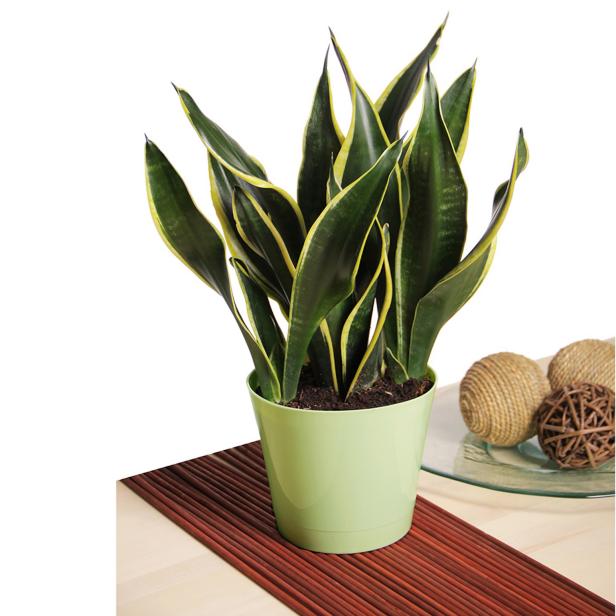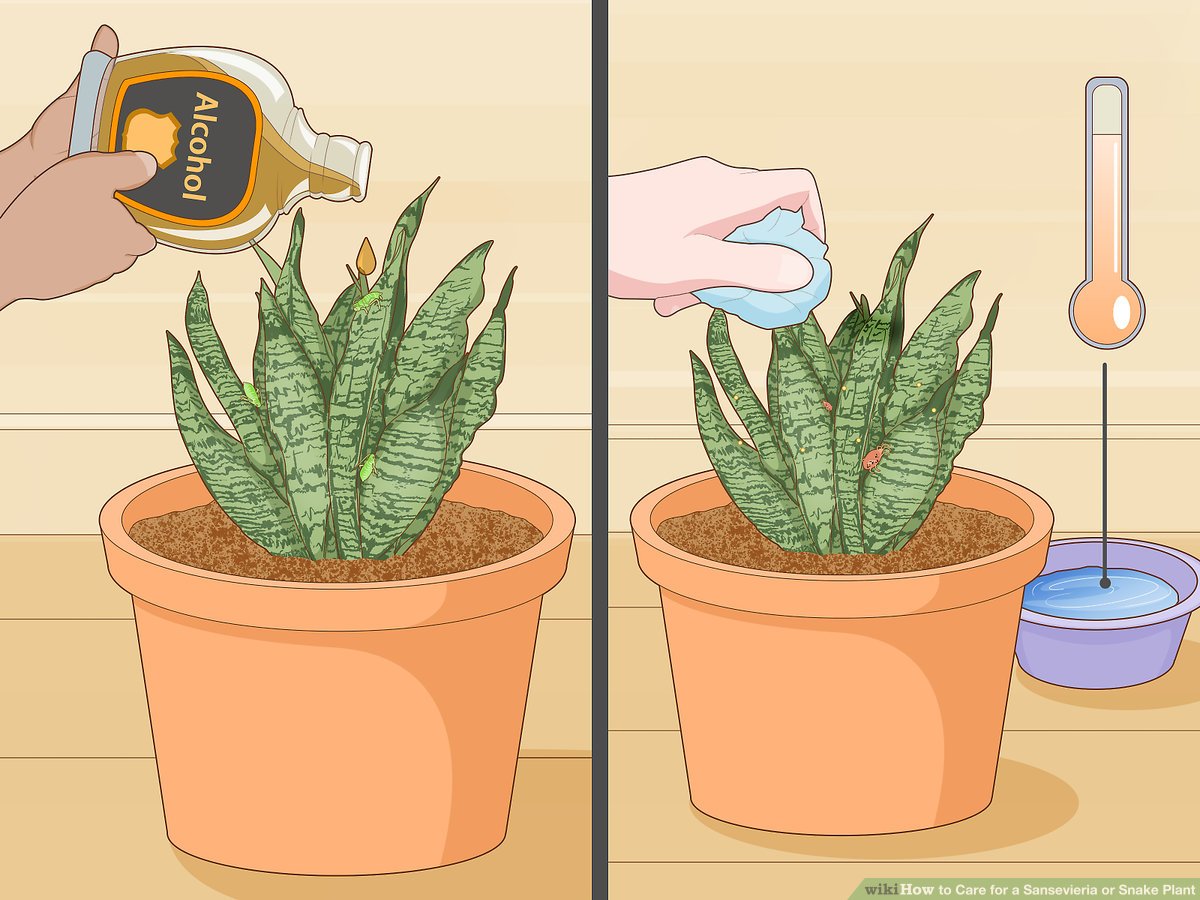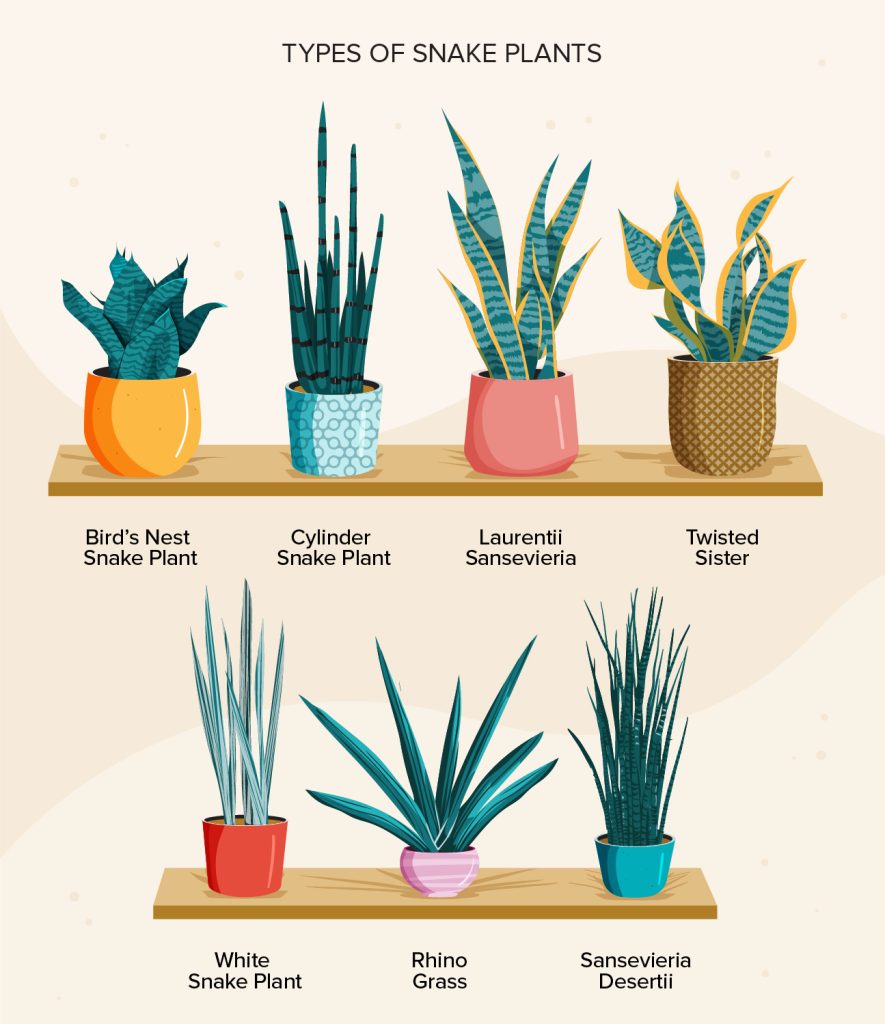
Since snake plants are adapted to withstand drought, give them a good soak and then wait until the soil is fully dry before giving them further water. To ensure that water has fully permeated the soil and reached the roots, always give snake plants a hearty soak as opposed to a light watering.
Native to Africa, snake plants are succulents that require well-draining soil, periods of soil drying out, and good soil to avoid root rot.
To determine how frequently and how much to water your snake plant based on your environment and conditions, keep reading.
Table of Contents
How Often to Water Snake Plants
Succulents of the sort known as snake plants have unique adaptations for thriving in hot, dry areas with little rainfall and well-draining soils.
To prevent water loss from the leaves during hot, bright days, snake plants only open their stomata at night and store water in their thick, meaty leaves.
Because of its drought-resistant characteristics, snake plants prefer drier soil conditions and less regular watering than the majority of home plants and are vulnerable to root rot.
The snake plant’s leaves will turn yellow or brown and become soft as an indication of stress if the soil is consistently moist.
It’s crucial to mimic the watering conditions of the plant’s natural environment if you want to effectively cultivate snake plants inside.
Only water snake plants after the soil around the roots has dried out a little between watering sessions. This usually entails giving your snake plant one watering every two to three weeks.
It is significant to note that, depending on a number of variables and during particular periods of the year, the rate at which the soil around your snake plant dries out can vary.
- the climate’s average temperature and humidity.
- How big the pot is (smaller pots dry out quickly).
- Whether the snake plant is exposed to forced air or direct air conditioning (which can sap moisture from the leaves and dry the soil quickly).
- the soil’s ability to hold onto moisture.
- interior temperature changes brought on by heating.
- when in the year (snake plants have a reduced demand for moisture in Winter).
Feel the dirt at the bottom of the pot via the drainage hole to determine how frequently to water snake plants based on the conditions in your environment.
If the soil seems wet, wait to water; however, if it feels a little dry, now is the ideal time to water.
When you know how long it takes for the soil in your potted snake plant to dry out, you can create a watering schedule that mimics the cycle of dryness, followed by rain, to which snake plants are used in their natural home in Africa.
How to Tell if you are Watering Snake Plants too Often or not Often Enough…
Since this prevents the soil from drying out between waterings, overwatering is certainly occurring if you water snake plants more frequently than once per week.
The signs of an overwatered snake plant include soft, mushy leaves that are turning yellow, brown, or even black rather than firm, green leaves.
If this is the case, reduce the amount of watering you give your snake plant and allow the soil to completely dry up so that it has a chance to recover.
(For a solution if your snake plant’s leaves have turned black, check my post Why is my snake plant turning black.)
On the other hand, if you are underwatering (watering infrequently or too lightly), the snake plant leaves will likely wilt, curl, or droop, and may even turn brown.
In such situation, give your snake plant a good soak and, if you can, immerse the root ball in a bowl of water for ten minutes. This will help moisture penetrate the soil and get to the roots, where it will be absorbed by the plant’s roots, which it desperately needs.
The snake plant’s leaves should revert to having a plumper appearance after two or three watering cycles with a generous soak each time.
Because snake plants can tolerate drought better than other plants, it is important to keep them on the dry side at all times. An underwatered snake plant may be revived much more easily than an overwatered one.
(Read my post on how to revive a dying snake plant for more details on the signs of overwatering and underwatering snake plants and how to save it.)
How Often to Water Snake Plants in Winter
The demand for moisture from snake plants varies throughout the year.
Snake plants need less irrigation in the winter because:
- There are less daylight hours.
- Less sunlight is present.
- In the winter, less water evaporates from the soil than in the summer.
- In the winter, snake plants lose less water through their leaves.
The snake plant may go into dormancy in the winter as a result of all these conditions, and it will essentially stop growing.
(For remedies, read my post on why snake plants are not growing; snake plants can stop growing for a number of causes.)
Check the soil’s moisture with your finger at the drainage in the pot’s base to reevaluate how frequently to water your snake plant throughout the winter.
You should wait longer between waterings of your snake plant than you would in the spring and summer because the soil can frequently keep damp for longer.
In the Winter, snake plants typically need to be watered once every three to four weeks with a good soak to maintain the ideal hydration cycle. However, you should alter your watering schedule to suit your particular conditions.
Also keep in mind that an indoor plant can dry out much more quickly in the winter if it is close to a heat source.
The ideal location for the snake plant is away from a heat source, however this can affect how quickly the soil dries out and how frequently you need to water your snake plant.
How Much to Water Snake Plants

Although the frequency of watering your snake plant can vary depending on the weather, humidity, and air currents, the amount of water you should be using remains constant.
Give snake plants a particularly generous soak to hydrate them so that water can be seen coming out of the pot’s bottom.
This guarantees that the water has adequately soaked into the soil, allowing the roots to absorb the necessary moisture.
A thorough soak also encourages the establishment of roots in the ground, further enhancing the snake plants’ drought resilience.
When plants are watered too sparingly, the top inch or so of soil becomes damp but the soil below may remain dry, making it difficult for the roots to absorb the moisture they need and leading to drought stress, which causes the leaves to shrivel and turn brown as a sign of stress.
(For information on how to discern the difference, see my post Why are my succulent leaves shriveling.) Succulents can occasionally shrivel as a result of overwatering.
With a sudden downpour of rain followed by a period of drought and scorching heat in their dry desert environment, watering with a generous soak and then letting the soil dry out recreates the watering cycle of snake plants in their natural environment.
Well Draining Soil is Key To Avoiding Over Watering
To keep your snake plant healthy and prevent root rot, the proper soil type, watering schedule, and quantity of water should all be used.
The drought-resistant snake plant suffers from root rot in conventional potting soils, which also causes the leaves to turn yellow, brown, or black and droop.
Peat soil repels water after it has completely dried out, as the soil should between watering your snake plant, which causes water to flow off the surface and prevents hydration from reaching the roots, leading to drought stress. It is vital to avoid potting mixes that contain peat.
Snake plants thrive on sandy or rocky soils that drain well without retaining a lot of moisture.
Growing snake plants in specialized succulent and cactus potting soil that accurately mimics the well-draining soil features of the snake plant’s native environment is crucial for maintaining the health of your snake plant and preventing root rot.
It is much simpler to maintain a healthy snake plant and establish the ideal moisture balance with potting soil mix specifically designed for succulents.
Water Snake Plants in Pots with Drainage Holes in the Base

A fantastic approach to make sure you have given snake plants enough water is to water them abundantly, and the best way to determine how frequently to water your snake plant is to feel the soil near the drainage hole.
If your snake plant is in a pot without adequate drainage, water will collect around the roots, which will lead to root rot.
Even so, water may still cling to the roots if
- Roots or compacted soil can obstruct the drainage hole. Check to ensure if the drainage hole is clear if your soil is draining slowly so that any extra water may properly drain.
- There are trays and saucers under the pot. This can stop extra water from leaking from the pot if you use a saucer or tray underneath the pot of your snake plant to stop water from spilling inside. To avoid root rot, always empty the saucer or tray frequently to allow the soil to air out.
- outside pots that add style. Although snake plants are typically shown in ornamental outer pots without drainage holes, I have seen them offered in stores planted in plastic pots with drainage holes. Plants should either be placed in a container with drainage holes or in an outer pot that can be frequently emptied to allow water to drain.
Key Takeaways:
- Snake plants need to be watered thoroughly so that any surplus water drains out of the drainage holes in the bottom of the container. When watering snake plants, give them a deep soak and allow the soil to dry in between applications.
- To ensure proper drainage and avoid root rot, put snake plants in specific soil designed for succulents and cacti.
- To allow extra water to drain, snake plants should be placed in pots with drainage holes on the bottom.
- Snake plant symptoms include shriveled leaves that curl inward and become thinner than they should. Overwatered snake plants have yellow, brown, or even black leaves that droop.
